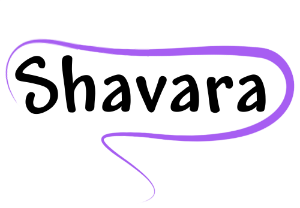No one would disagree that the Affordable Care Act, so commonly referred to as “Obamacare” garners more than its fair share of attention in all forms of media, TV, print and electronic. The key points frequently mentioned and feverishly debated center around healthcare availability and provider reimbursement.
Another passionate topic stemming from the ACA centers around how providers are being “encouraged” to use electronic health records (EHRs), electronic prescribing (eRX) and electronic claims submittals. Medicare offers incentives for the first two with the potential for reimbursement penalties if non-compliant. Some Medicare contractors will not even accept paper claim forms unless it requires an attachment or is an appeal. The use of these technologies hopes to increase patient care, provider efficiency and in the long run, reduce medical costs. All good things, we can agree.
So when I stumbled upon a recent article highlighting one very small portion of this program, EFT/ERA mandates for payers, I was pleased. Now the insurance companies must join in the effort to assist providers to reduce costs and increase efficiency.
This mandate, with a deadline of January 1, 2014, requires payers to be compliant in offering electronic claims reimbursement this includes the adoption of electronic funds transfer (EFT) and electronic remittance advice (ERA) operating rules and technical standards.
For anyone not immersed in the field of medical billing, I am sure it would come as a big surprise the amount of “paperwork” still involved in filing claims and receiving reimbursements. Amazingly, in this high tech world with almost “space age” type gadgets, it is estimated that only 46% of healthcare remittances (EOBs) are available electronically. In addition, most of the population utilizes some form of electronic bill pay or funds transfer, but only about 10% of insurer payments are sent via EFT.
This quagmire of paper translates to numerous man hours in the medical office “deciphering” remittances and keying data as well as slowing down the cash flow considerably. In a full electronic scenario, it is possible to provide a service, bill it to the insurance company and receive the payment within 5 to 7 business days. In the “old days” a paper billing cycle averaged 30 to 45 days. From a business perspective, this new mandate is a win-win situation for providers.
Granted, provisions regarding electronic payments in the Health Insurance Portability and Accountability Act (HIPAA)have been around for years, but theylacked the real guidance for the needed infrastructure. This is evident when looking at the variety of formats and nomenclature used by payers in their remittances.
Due to this lack of consistency, even advanced practice management software, like Iridium Suite, can be limited in its ability to auto-adjudicate non-standardized information even in a properly formatted 835 electronic remittance advice (ERA). This results in requiring intervention from medical office staff to figure out what the payer “means”.
Follow this link for a free educational white paper: “Understanding Explanation of Benefits Statements”
The benefits of the new rules are obvious: to help providers more quickly match payments received with remittance data which will allow staff to post to patient accounts more quickly. (This will also facilitate the intended “intervention-less” functionality offered by the medical billing software.)
The basics of the provisions are simple:
1. Health plans are required to have the capability to transmit EFT and ERA files to any provider organization that requests electronic transactions.
(While providers are not required to accept electronic payments from health plans, they will be required to receive Medicare reimbursements via EFT.)
2. The mandate also states that if a provider requests to receive funds via automated clearing house (ACH), payers must have the ability to comply.
Electronic payments can be utilized in 3 basic ways:
1. A standard EFT transaction directly to the provider’s bank account from the payer. This type of transaction is set up directly between the provider and each individual payer, which for some practices may be considered too much effort. (Enrollment for large payers can frequently be done in a “paperless” fashion on their provider website, with payments arriving via EFT in just days.) There is no cost to the provider for this service.
2. As mentioned above, ACH transactions using a third party “clearinghouse.” This type of transaction is set up between the provider and the clearinghouse. The provider will have to initiate an association with a clearinghouse to be able to enroll for ACH EFTs. While some clearinghouses offer this service at no cost to the provider, individual clearinghouse polices may differ.
3. Virtual credit card payments. The provider is not required to perform any enrollment with the payer. A virtual credit card payment is received and “keyed” into the providers existing Point of Sale (POS) system. There is no cost to the provider from the payer, but the standard POS transaction rates will apply. So in this scenario, the convenience of no enrollment must be weighed against the cost of the credit card processing.
The new year is quickly approaching, so as a provider or medical office staff you should start thinking about the implications of the mandate now. Discuss the electronic payment options to determine which one best suits your needs.
If you decide on the ACH option, research of the individual clearinghouses for enrollment procedures and potential fees will be crucial. To get ahead of the game, compare your current payer list to those offered by your choice of clearinghouse and enroll for payers already offered. You will then just have to add the new ones in January.
Proper preparation will ensure you will be able to take full advantage of the benefits of this upcoming requirement.
Follow this link for a fun infographic: Secret ACA Mandate 


